The Ancient Magus’ Bride (Crunchyroll) is turning out even better than I hoped. The author has created an unusually rich and fascinating fantasy world, both beautiful and terrifying.

In my last post I said that Chise needed to get a grip and stop being so passive. She has done so. She has thrown herself into her new life as a magus’s apprentice, confirming that she has a great (though undisciplined) talent. More important, she has shown herself to be both brave and resourceful, something not really evident in the first few episodes. (Though one might argue that she needed to be both in order to survive her horrifying childhood.)
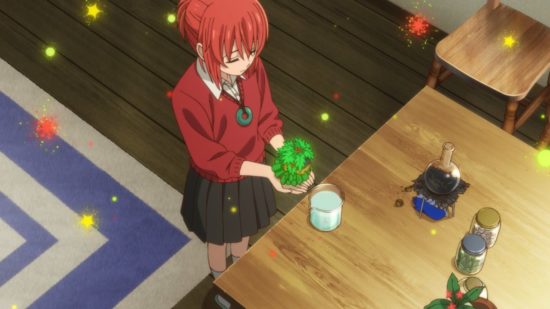
Sure, Chise still has a lot to learn and a lot of growing up to do (if she lives that long.) Young as she is these can hardly be called flaws and I can only cheer her on.
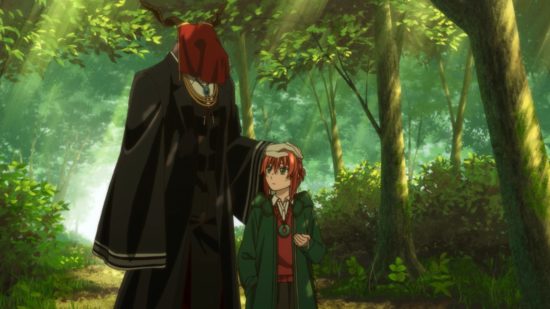
Previously I referred to Elias as an “insensitive jerk.” At this point I think I’d call him well-meaning but not human. The character he most reminds me of is Alastor in Shakugan no Shana. He’s wise and powerful but often startlingly clueless about how to deal with a teenage human girl he’s taken responsibility for.
(While Alastor is well-intentioned to Shana he can be shockingly indifferent to other humans. Some accuse Elias of being much the same.)
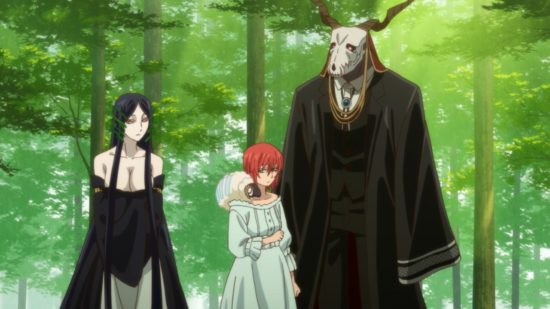
On the other hand, Elias has been accused of hoping to become human though his relationship with Chise. I suppose that would make him more like Shana.

And I probably should emphasize that Chise is not at all like the hot-tempered, emotional Shana. Chise is, if anything, excessively reserved and repressed. I hope to see her come out of her shell more as she gains confidence.
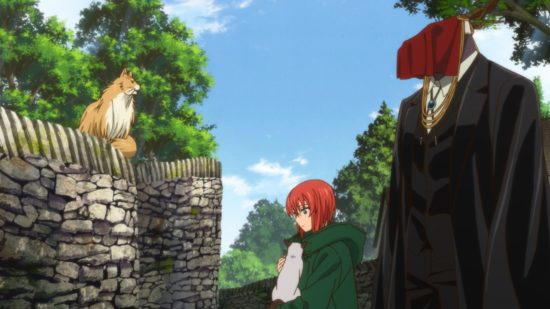
We know tantalizingly little about Elias’s background, other than the fact that a number of characters say he isn’t human.
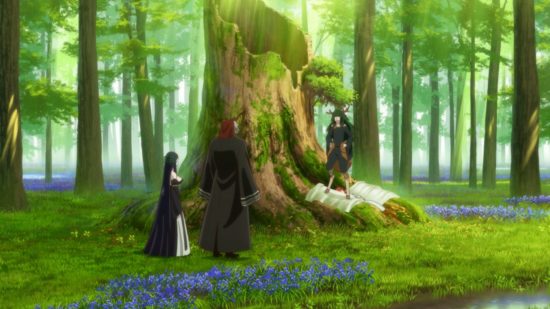
Was he originally some sort of fairy? Or was he a man who lost his humanity through meddling in the dark arts? That seems all too possible in this world.

In any case he seems to be trying in his own way to treat Chise ethically. Note that every time some shady character has offered Chise a chance to escape from him he has waited for her to say that she wants to stay before he has appeared and intervened.
Even his questionable decision to withhold the information that she is likely to die in three years (unless his plan works) may have been intended to give her the chance to make an uncoerced decision to stay with him. Saying “You’ll die soon but if you stay with me I can save you” would not leave her much choice at all.
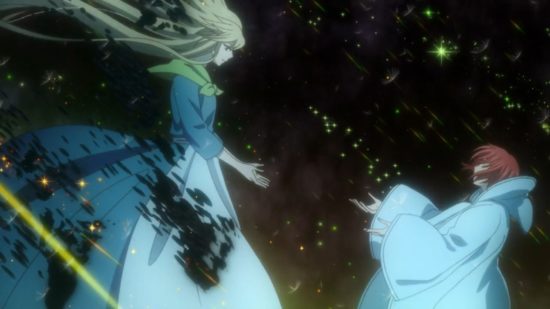
One source of debate among fans is the use of the odd term “Sleigh Beggy” to describe Chise’s talent/curse. (She’s very attractive to fairies but people like her tend to die young from absorbing more magic than their bodies can deal with.) Kore Yamazaki, the author, just says cryptically:
“…you could say she’s kind of like a mutant. She’s human, but not really. There are quite a few of them in the Magus Bride world, though they haven’t been discovered. Chise can see all kinds of things, but most people can’t, even though they are capable. Even if, say, they’re attacked by something, it just looks like they died from a freak accident or from illness.”
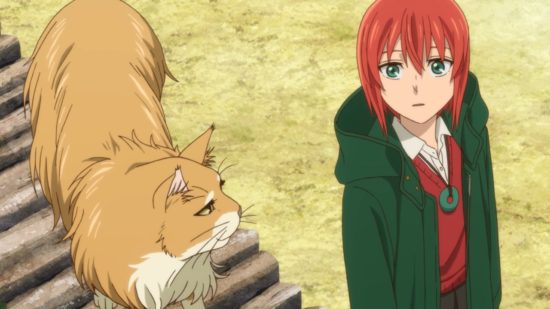
Crunchyroll’s translation of the OVAs rendered this as “Slay Vega” (as did the original unauthorized manga translations) and many fans seem to prefer this. It also sounds more like what the actors are saying in the anime.
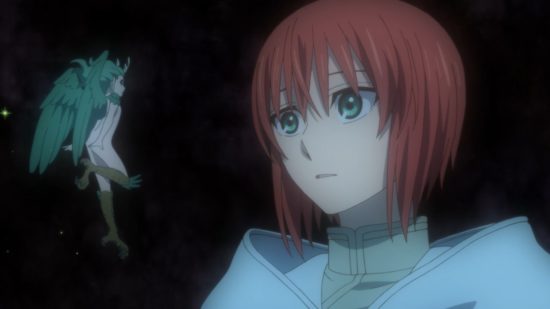
As far as I know “Slay Vega” doesn’t mean anything in English or any other foreign language but of course fantasy writers make up words all the time, so that doesn’t mean much.

“Sleigh Beggy” does have a traditional meaning but it’s very obscure and doesn’t seem to fit. A web search will turn up mostly references to The Ancient Magus’ Bride but if you eliminate these a few are left that describe a peculiar fairy from the Isle of Man. The picture on the left is from a Swedish site. The few English sites all use much the same text, so I’ll just quote the oldest one I could find:
Sleigh Beggy – Little is known about these shy, stocky Manx faeries who live in underground burghs. It is known that they hate the taste of salt and don’t like ashes or artificial light, so you are unlikely to find them in your modern home. They’re believed to anger easily. The Beggys go nude and have crow’s feet which make their footprints easily recognizable.
That doesn’t sound like Chise. (In fact it sounds more like the fairies called “Ariels” who appear in several episodes.)

Another site says that “Sleigh Beggy” means “The Small Folk” in Manx and is thus just a generic euphemism for “fairy”.
Kore Yamazaki has obviously done a lot of research into English and Celtic folklore but it’s hardly likely that she would be digging up obscure references in English or Swedish. Her research would probably be limited to sources available in Japanese. Time for me to apply my inadequate Japanese-language skills!

The Japanese Wikipedia site for the series describes Chise as 「夜の愛し仔(スレイ・ベガ)」which I transcribe as “yoru no hashiko (SUREI-BEGA)”.
Remember, the story is told in Japanese but is set in England, and the characters are all presumably speaking English. So the Wikipedia entry is telling its Japanese readers that Chise is a yoru no hashiko (Beloved Child of the Night) but that these foreigners call her a “SUREI-BEGA/Slay Vega/Sleigh Beggy” (as nearly as it can be rendered in katakana.) (Also the use of “仔” for “child” suggests that she may not be entirely human.)
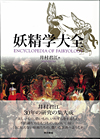
So then I searched for “スレイ・ベガ” which of course returned a vast number of references to the series. When I restricted the search to before 2012 (the manga first appeared in 2013) the first link returned was to this: the publisher’s description of Yosei Gakutaizen (The Encyclopedia of Fairy Studies) by Kimie Imura, a 500-page tome published in 2008.
This seems like exactly the sort of reference that Kore Yamazaki would use for her background research. I would be willing to bet that she has it on her bookshelf, if not open on her desk. The summary for Chapter 1 (“The Fairy Catalog”) includes an entry for “スレイ・ベガ”, which in this context can only be “Sleigh Beggy.” As far as I’m concerned that settles it. “Sleigh Beggy” is what the author had in mind, even if she changed the meaning.

